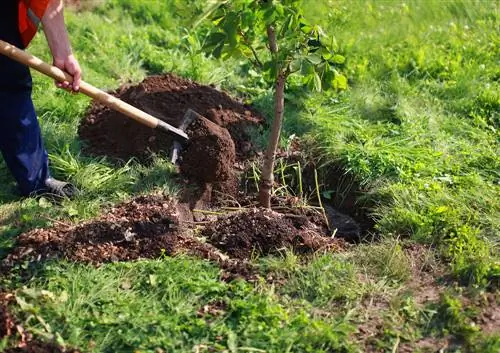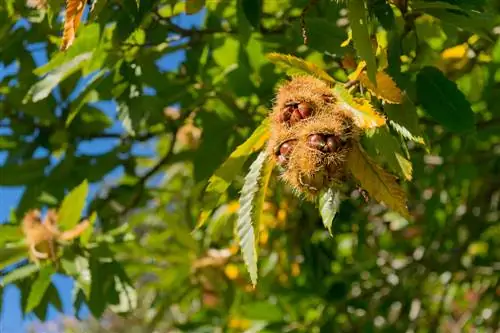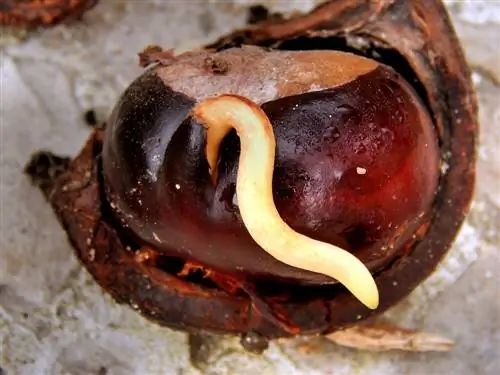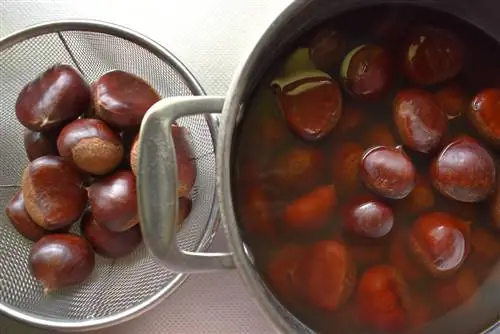- Author admin [email protected].
- Public 2023-12-16 16:46.
- Last modified 2025-01-23 11:21.
Having a chestnut in your own garden is certainly a dream for some people, and one that can be achieved relatively easily. However, before you make it a reality, you should check the space available in your garden. Chestnuts need a lot of space.

How to plant a chestnut correctly?
To plant a chestnut successfully, you need a sunny location, plenty of space, and fresh and not too moist soil. The planting hole should be large enough and enriched with compost. Check and water young chestnuts regularly.
Is there a difference between chestnuts and horse chestnuts?
Even if the fruits of the sweet chestnut and the horse chestnut look similar, they are completely different genera from different plant families. Nevertheless, they have quite similar needs. However, the sweet chestnut is more sensitive to frost. It prefers a mild climate.
The best planting time
You can almost always plant a chestnut from a container. The ground just needs to be frost-free and the chestnut needs to be used to the outside temperature. However, you will find the best conditions for good growth in spring.
Choose the right location
Both types of chestnut prefer a sunny location. The soil should not be too moist, but not too dry either. Wetness on the roots promotes various diseases, especially the so-called ink disease. Trees affected by this die after just a few years.
When looking for a location, also consider the size of the fully grown chestnut. A common horse chestnut grows up to 30 meters high, while a red horse chestnut only grows to around 10 meters. The sweet chestnut, with an average height of approx. 20 to 25 meters, is not a small plant either.
Digging the planting hole
Ideally, you should plant a fairly young chestnut, which requires the least amount of work. The planting hole should be at least twice as large as the root ball of your tree. This refers to the diameter of the hole. The depth corresponds approximately to the root ball plus a little addition of well-rotted compost, which you incorporate as fertilizer.
Planting the chestnut
If you notice while digging that the soil is very firm, loosen it a little with a generous addition of sand or gravel. Then place the chestnut in the planting hole. It should be about as deep in the ground as it was before transplanting.
Water the chestnut thoroughly before transplanting. This means the soil will close properly around the roots when you plant the chestnut tree. Then water the plant a little. You should keep a close eye on young chestnuts over the next few weeks and water them a little if necessary so that they don't dry out. This is especially true in particularly hot and/or dry weather.
The most important things in brief:
- sunny location
- needs a lot of space
- fresh, not too moist soil
- Sweet chestnut less frost hardy
- dig a large planting hole
- Incorporate compost and possibly sand
- check and water young chestnuts regularly
Tip
If you are looking for a “small” chestnut, then take a look at the red horse chestnut.






